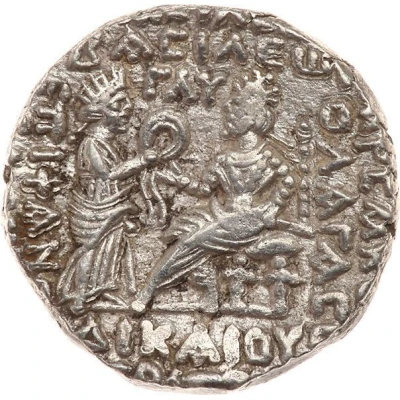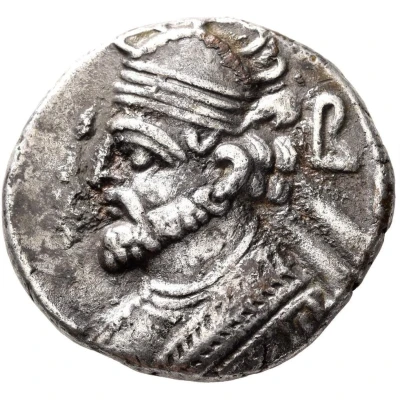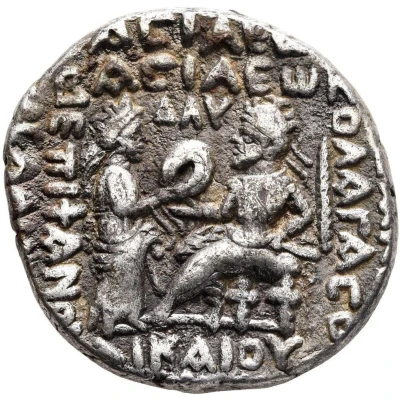


© The New York Sale
Tetradrachm - Vologases III
433 (122) year| Billon | 14.32 g | - |
| Issuer | Parthian Empire (Parthian Empire (247 BC - 224 AD)) |
|---|---|
| King | Vologases III (105-147) |
| Type | Standard circulation coin |
| Year | 433 (122) |
| Calendar | Seleucid era |
| Value | Tetradrachm (4) |
| Currency | Drachm (247 BC-224 AD) |
| Composition | Billon |
| Weight | 14.32 g |
| Shape | Round (irregular) |
| Technique | Hammered |
| Demonetized | Yes |
| Updated | 2024-10-10 |
| Numista | N#415812 |
|---|---|
| Rarity index | 97% |
Reverse
King seated left, receiving wreath from Tyche standing right, holding sceptre, year above, month in exergue.
Script: Greek
Comment
Periteios 433 SE (January, AD 122).
Interesting fact
One interesting fact about the Tetradrachm - Vologases III 433 (122) coin from the Parthian Empire is that it features a unique blend of Greek and Persian influences in its design. The coin's obverse side features a portrait of Vologases III, the ruling king at the time, with a distinctly Persian-style crown and beard, while the reverse side depicts a Greek-style mythological scene of Apollo and Artemis. This fusion of cultural influences reflects the Parthian Empire's position as a crossroads of trade and cultural exchange between the East and the West.



